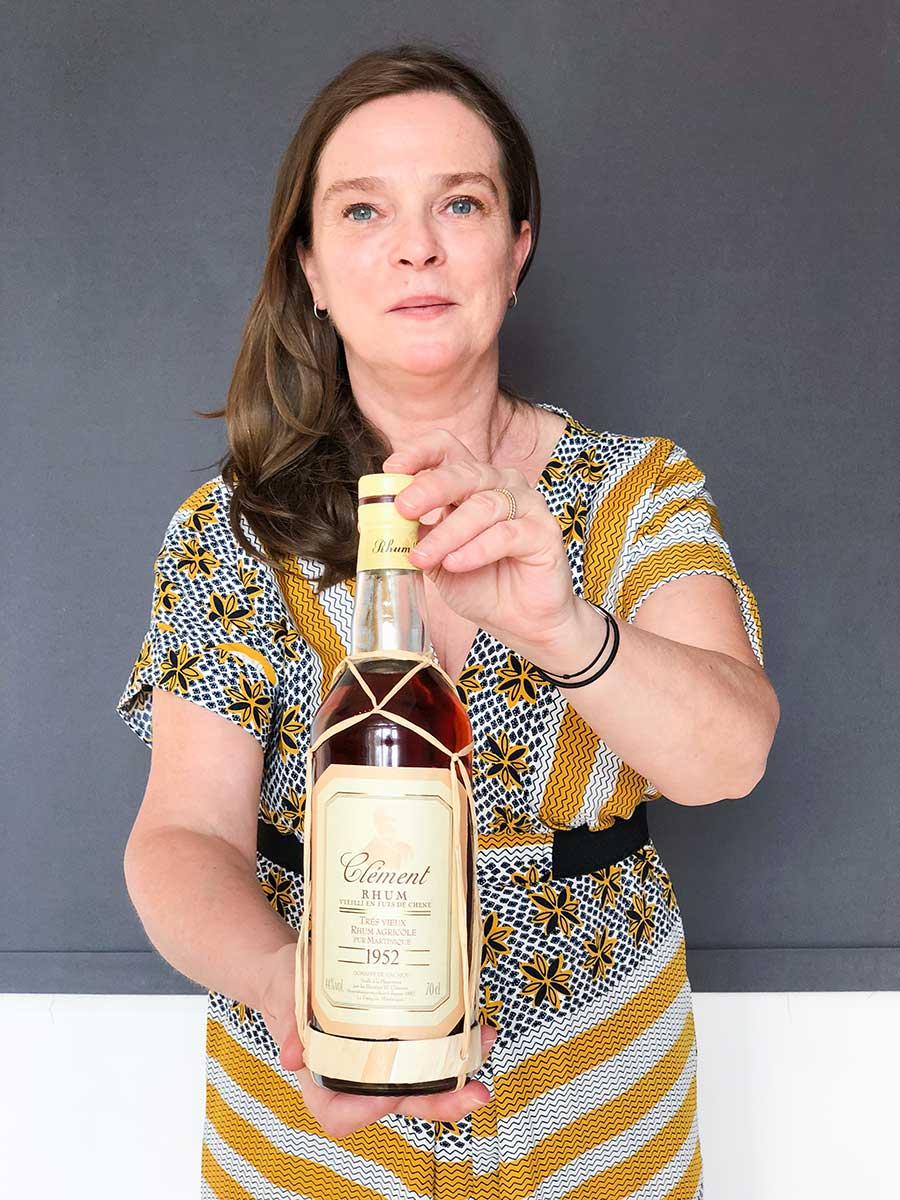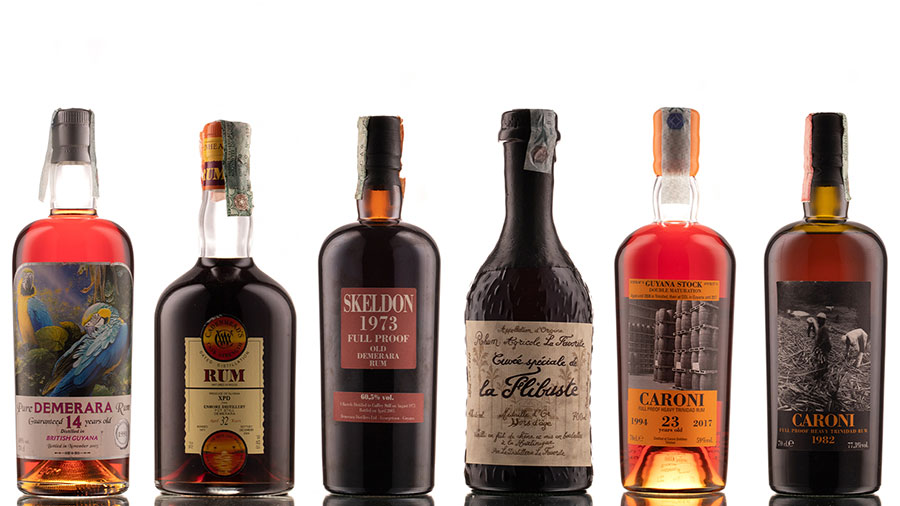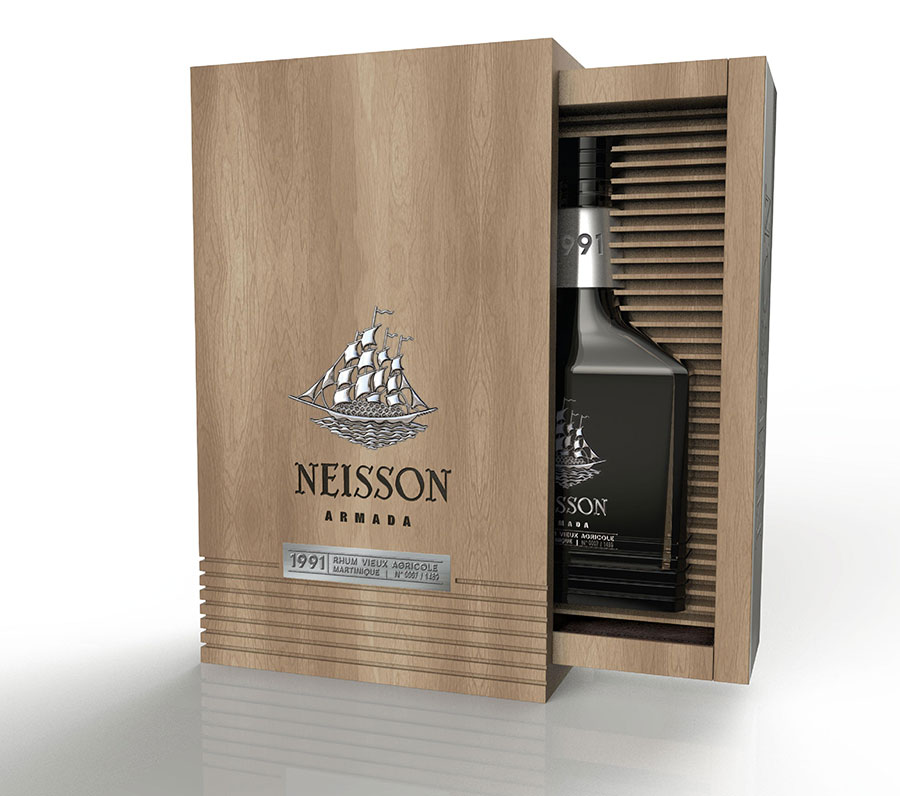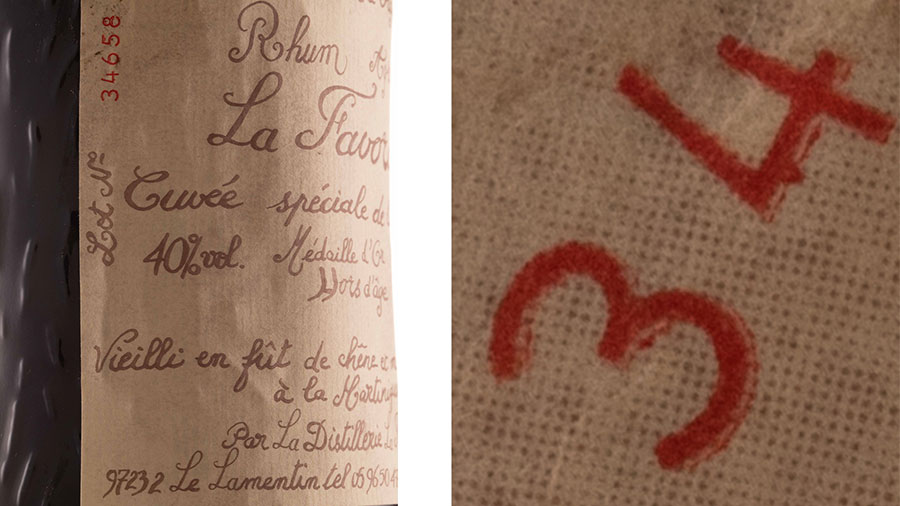Although it is not yet as speculative as wine or whisky, rum is becoming increasingly interesting to speculators. They see it as a tangible asset and a promise (unless it is a mirage) of short-term profits. Alongside traditional agricultural rums (Bally, Neisson, J.M, La Favorite, etc.), “English” rums (Caroni, Foursquare and other Demerara rums) are particularly sought after and are seeing their prices soar. But beware, because no one knows if this is a flash in the pan or a major trend, while counterfeits and scams are on the increase.
A little over a year ago, the very serious Figaro newspaper ran the headline “How has rum become more speculative than whisky”. Rumporter has been noticing this for a few years now: the speculative nature of rum is growing. For proof of this, one only needs to look at the 2021 year in review published by Fine Spirits Auction (FSA), an online auction site for spirits launched by the House of Whisky (LMDW) and online wine auction specialists, Idealwine.
The most expensive rum sold on the site in 2021 was a 1978 Skeldon Velier, which went for €17,818. This is almost the same as the most expensive whisky, a 1983 Karuizawa, 29 year old Noh # 8897, which sold for €17,936. While the most attractive distillery with 113 sales was Ardberg in Scotland, the second most attractive distillery was Caroni, with 101 sales.
It is a long way from saying that the attractiveness of rum exceeds that of whisky, as whisky sales are much more numerous. But the fact remains that rum is the new territory that is being cleared by both established and budding speculators.
The success of Velier and Caroni
It probably all started in the early 2000s with the success of the limited editions launched by the independent bottler Velier. When its creator, Luca Gargano, decided to release limited editions of old juices that had not been sweetened, that had been aged entirely in a tropical climate, whose origin, distillation date, bottling date, alcohol content and ester content were known precisely, rum entered another world.
Whereas it might previously have seemed opaque or difficult to read, it became a safe, verifiable, collectible product, and a potential target for speculators. The closure in 2002 of Caroni, a Trinidad & Tobago distillery previously known only to a small number of aficionados, followed by the purchase of its stock by Velier and LMDW in 2004, was another crucial step in the transformation of rum into an investment product. The rum had its ghost distillery, a distillery that had closed down and had a limited stock of rum because it no longer produced any.
Add to this the know-how of Velier and LMDW in the field of limited series, and a legend was born. By the early 2010s, Caroni’s bottlings began to become particularly sought after by collectors, and by the early 2020s they had become clearly speculative. Since then, Caroni has been joined by other rums.
“At the moment Foursquare, Appleton, Habitation Velier, Beenleigh, Don Papa, Rom de Luxe, The Wild Parrot, Rhum Rhum, Savanna, Neisson and Silver Seal are all rising in price,” says Kristyna Tumpachova from Poland, who runs spiritradar.com, a website that publishes rum bottle prices. In recent years, we have seen a very strong revaluation of molasses rum, which is increasingly appreciated, including by the public that likes agricultural rum,” says Italian Federico Ahmed Garcia, who founded Rumtrades.com, a site that buys and sells rare rums. The most successful brands are the historic bottles, the legendary old Demerara de Velier selections and cult rums such as Caroni, which is increasingly referred to as the Karuizawa (a ghostly Japanese distillery) of rum.
Agricultural rums are still popular
As you will have noticed, few or almost no agricultural rums are spontaneously mentioned by our interlocutors. This is because the public interested in the collector’s rum market is made up of two very distinct types of players, who are nevertheless becoming confused.
On the one hand, there are the “old school” collectors/investors, who favour French rums, particularly from the West Indies. “I started my collection in the 2000s after a trip to Guadeloupe, and today I have more than 1,000 bottles,” explains Gilbert (the first name has been changed so that he cannot be identified, for obvious security reasons), a collector who remembers a time when old agricultural rums from the 1960s, 70s and 80s could still be bought for a few dozen euros. However, in recent years, these same agricultural rums (Bally, JM, Clément…) have also begun to increase in value and are doing very well at auction.

“When we sell a wine lover’s cellar, there are often old agricultural rums and they sell well, and have done so for years, even though we have seen an increase in interest in them, as well as in prices,” says Laurie Matheson, head of the wine and spirits department at the Parisian auction house Artcurial (Dassault group). The value of these sure values is therefore slowly but surely increasing.
But newcomers to the collectible bottle market are happily overtaking them. The new buyers, who are younger, sometimes coming from whisky, and who are not particularly fond of wine, tend to favour foreign molasses rums,” continues Laurie Matheson. However, we don’t see many of them in our auctions at the moment, as these bottles are traded more on specialist websites.
Allocations coming soon?
From now on, the borders are more porous, and lovers of agricultural rums can very well fall for an old Demerara, and an aficionado of heavy English tradition rums can buy a pin of Favourite… as long as the financial potential is there.
And a new type of player, who, with the help of the internet, come from all over the world (in 2021, 30% of FSA buyers were foreigners) and who sometimes know nothing about rum, no longer buy to drink, but only to hoard the time their bottles increase in value. Before reselling with an increase in value, sometimes in record time.

Thus Spirit Radar’s team has revealed the performance of a few bottles between January 2022 and January 2023. If we compare their financial performance to the Paris stock market (the CAC 40 lost 10% over the same period) or the gold market (+5.79% in 2022), there is no comparison!
Even ‘classic’ collectors have changed their approach. They no longer collect just for the love of the product, or for the beauty of the labels, but also with the aim of keeping their collection alive. The new limited editions of the West Indian distilleries are coming out at high prices, and even though I earn a relatively good living, I sell some of my old bottles to be able to afford them,” explains Franck. And whereas I used to be able to buy as many bottles as I wanted, now I’m only allowed two or three bottles. It’s only a short step from there to a system of allocations, as practised by the great Burgundy estates (they only sell to a defined list of customers who buy year after year), and this is about to be jumped.
Too many limited series kill rarity
Franck puts his finger on another explanation for the surge in the speculative nature of rum. The release of all kinds of limited series, ultra-premiums, rare and in demand. The most speculative distilleries and bottlers, fed up with seeing their bottles sold for 5 or 10 times their original price, have decided to take a larger share of the margin by increasing their prices and creating (sometimes artificially) scarcity. In the end, this generates a price surge on the second market.
And distilleries that were not speculative become speculative by deliberately releasing limited editions. Bottle prices are artificially inflated and quantities are limited, so rum lovers often don’t have the opportunity to buy new releases directly from the distillery or bottler, and they have to wait until they can buy them at an excessive price on the second market,” says Kristyna Tumpachova. This is not a win-win situation for the brands either, as people don’t drink some rums at all, they put them on a shelf or in a cupboard, where the bottles wait to be sold later. Another problem is that the alcohol market is becoming oversaturated as more and more brands launch their limited editions with the intention of making potential profits.”
Another phenomenon, pointed out by Morgan Ricci in this issue, is that rum brokers and distilleries that sell casks to independent bottlers are also increasing their prices, which are passed on to the price of the bottles that come onto the market.
Uncertain potential
What will happen to these limited editions, which have been coming out in large numbers in recent years, in 5, 10 or 20 years’ time? It’s hard to say. “The most expensive whisky was sold for 1.7 million euros, while the rums are selling for several tens of thousands of euros, so the growth of rums is far from over, and their potential is very high,” says Etienne de la Morsanglière, who runs Fine Spirits Auction. For the moment, rum buyers are still in a collection-building phase, and I think we’ll see them coming to us in a few years when they want to make their investment profitable,” analyses Pascal Kuzniewki, who works for the Cannes auction house Besch. As for their financial potential, it’s hard to say, because the multiplication of limited series has the effect of making the market rather unclear.

So be careful. It is not enough to buy a label with a particularly sought-after name to be sure of making a good deal, and even less so of a capital gain in 1, 5 or even 10 years. Let’s take the example of Caroni again: on specialised websites, while some vintages sell for several thousand euros, others barely exceed a hundred euros, and still others barely a few dozen. Not easy to find your way around, unless you are a particularly sharp expert!
Beware of scams!
Especially since wherever it occurs (as we have seen in wine or whisky), speculation always brings its share of deception, scams and even counterfeits. “You have to be wary of fakes, this phenomenon mainly concerned the world of whisky, but with the price explosion of recent years, rum has also fallen victim to this scourge, warns Federico Ahmed Garcia. The most sought-after bottles tend to be counterfeited, simply because they are the most valuable and offer a high return to the crooks.
No doubt we will also see rum-based investment funds arriving in the near future, as has been the case with wine and whisky. In general, they offer you to entrust them with a sum of money which they spend on buying bottles. These are sold by them when the price is right. But apart from the fact that these professions are highly regulated (only a few companies are allowed to operate in France), they can also be used as a front for swindlers who siphon off your bank accounts… without ever seeing the colour of a bottle! Caution is therefore more important than ever.
3 tips for investing with caution
Here are some tips if you still want to make money in rum.
1: Only buy rums that you know and love. That way, if they don’t increase in value, you’ll still be happy to drink them.
2: Never put all your eggs in one basket. Put only a small amount of your savings into one or two bottles. In a word, diversify!
3: When it’s too good to be true, whether it’s a very low purchase price or promises of very high capital gains, it’s a scam!
Box: Pamper your treasures!
Compared to wine, spirits are relatively stable products that can stand the test of time without suffering too much. But that doesn’t mean you shouldn’t follow certain rules. You have to start by protecting your bottles from light and temperature variations,” explains Étienne la Morsanglière. It is also useful to put plastic around the cork (to prevent the alcohol from evaporating), as well as labels (to prevent it from being damaged by humidity). Take care to preserve and protect the packaging, a bottle without packaging sells much less well.”





